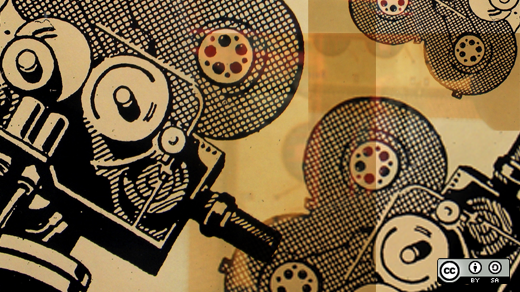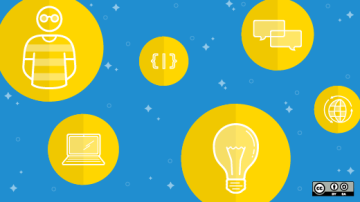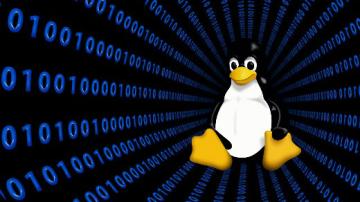For some, the holidays are a hectic time of shopping, cooking, and a house overflowing with loved ones. For others, they’re quiet times spent with just a few friends, or even in solitude behind the warm glow of a computer monitor. And for still others, it’s a workday like any other.
No matter how you end up spending the holiday season this year, there’s comfort to be found in the Linux App Summit of 2019. This summit, which combined the strengths of everyone involved in developing applications for Linux, focused on a few major topics:
- Distributing software and packaging systems
- How to make free and open source application development financially sustainable for developers
- Application stores
- Project management
- Improving communication with end users
Fortunately, for those of us who didn’t get a chance to attend the summit, there are recordings of the presentations available. That means you can turn off the boring old holiday parades and sappy movies and tune in to these great tech presentations instead.
Here is just a sample of the presentations you can spend your holiday season enjoying.
Application delivery
Flatpak is an exciting and inevitable topic for a summit about Linux apps. You can learn how to build your own Flatpak right here on Opensource.com, but for more information about what’s brewing, check out these talks:
-
In a talk titled Desktop services as Flatpak, Daniel García Moreno (GNOME developer and maintainer of Fractal) explains how Flatpak can export services provided by one application so other apps can use them, even when the original app is not launched.
-
Get an introduction to Portals and their principles and practice from Matthias Clasen. He covers design principles for the user experience as well as the API design. Then, he looks back at the year since hitting 1.0 and reviews some of the important lessons learned from using portals in a variety of applications.
-
Let Alexander Larsson, a member of Red Hat’s desktop group, explain what it’s like maintaining a Flatpak repository, how a Flatpak repository works, and the different options you have when it comes to hosting one. He also discusses how to scale a repo from a local test instance to a global instance like Flathub.org.
-
In Building an app store with Flathub, Robert McQueen, chief of engineering at Endless OS, explains how Endless is looking to implement a pay-what-you-want app store for Flathub, encouraging users to make optional donations to developers of free and open source apps before continuing with a download.
-
Heather Ellsworth, a member of the desktop team at Canonical, talks about making GNOME desktop Snap applications, demonstrating how developers can get started making GNOME Snaps using new GNOME extensions and other methods that simplify creating the requisite metadata for GNOME desktop apps.
Development workflows
-
Here’s a controversial statement: there is no "Linux" platform. That’s what interaction designer Tobias Bernard and Jordan Petridis, a QA and multimedia engineer at Centricular, say in their talk. It’s hard to argue with it, given the array of different packaging formats across ten times as many distributions. They make the case that, instead of a vague "Linux desktop" and dozens of distributions repackaging the same software, app developers need separate, clearly defined, vertically-integrated platforms. Could it happen? Watch this talk to get a glimpse into a possible future in which the community replaces the current distribution model with healthy and robust ecosystems.
-
Find out how the Linux world can benefit from Product Managers from Emel Elvin Yildiz, product manager at the GNOME Foundation. In this talk, she explains how she contributed to the launch of the "GNOME Recipe App" and how she believes her experience can help other projects become a launched product.
-
You may have heard of Meson, but did you know it’s THE build system for app developers? Nirbheek Chauhan, a GNOME, GStreamer, and Meson developer, thinks so and, in this talk, he explains why Meson was created and why he considers it the best build system in existence. Bonus: you get a crash course in Meson syntax!
-
In Ubuntu Kylin Practice on Application Construction for Linux Ecosystem, Min Liu, Jack Yu, Xiaodong Liu, and Qing Liao of the Ubuntu Kylin project talk about the efforts and insights of their development team in building the Linux application ecosystem.
-
What is product management, anyway? In Product Management in Open Source, Nick Richards, product manager at Endless, tells you all about it, and how it can help with challenges facing the free and open source software community.
User interface and interfacing with users
-
In Curb Cuts, Cassidy James Blaede, co-founder and CXO at elementary, explains how curb cuts–the slopes on sidewalks designed to facilitate wheelchairs–improve the experience for everyone, regardless of any specific ability or impairment. Cassidy addresses how, in the same way, digital accessibility features should be ubiquitous and well-supported because they help everybody.
-
Heather Ellsworth of the desktop team at Canonical moderates a panel featuring Aleix Pol, president of KDE e.V., Robert McQueen, chief of engineering at Endless, Alexander Larsson of Red Hat’s desktop group, Alan Pope, developer advocate at Canonical, and Daniel Foré, founder and CEO of elementary Linux, about the future of Linux applications. The panelists agree that an increase in diversity is not only desirable, but unavoidable, that developers should seek a closer relationship with end users, and that cooperation between projects is key.
-
In Bad Language, Paul Brown, a communications expert working for KDE, uses examples to show how, by modifying the descriptions of apps and news about projects, you can increase user engagement and involvement.
-
Communicating with users is important! In Humanspeak, Robin Tafel, product designer at Endless, covers techniques and methods for user experience copywriting, discussing some high-level principles of semiology (communication) and communication strategies, and how to make your copy understandable to your users.
Desktop paradigms
-
Are we missing something? Join Florian Müllner, a GNOME developer at Red Hat, as he ponders whether we need a platform API for background applications, and the consequences of GNOME dropping built-in support for "traditional" status icons.
-
In Growing Beyond the System Tray, Daniel Foré, founder and CEO of elementary, discusses the flaws of the system tray design. More importantly, he looks at some solutions that modern desktops have come up with instead, and how an app can lose the system tray without losing any functionality.
-
Qt does a lot to make applications cross-platform, but creating a full implementation of an application is a lot of work. Nobody knows this better than Aleix Pol, president of KDE e.V., but he nevertheless challenges us to target Linux, Android, and beyond. In this talk, Aleix explains how KDE is trying to solve the problem of developing apps for Linux, Android, and many more platforms.
-
In How I Squeezed GNOME Into Your Pocket, Adrien Plazas, a GNOME developer at Purism, describes how he helped prototype the latest GNOME Mobile initiative and implemented some early widgets. He also discusses the shortcomings, workarounds, and all he did to help that initiative gain traction.
-
Cute Qt Applications in GNOME desktop are what Jan Grulich, a senior software engineer at Red Hat, wants to see. In this talk, he shares how you can make Qt applications to perfectly fit into the GNOME desktop.
-
It’s time for the year of the virtual Linux desktop! Lubosz Sarnecki works on XR (AR/VR) at Collabora and, in this talk, he reviews existing implementations of AR and VR, requirements for a new set of user interactions, and how the classical UX model of keyboard and mouse translates to these new concepts. He also gives an overview of the status of open source in AR and VR, and the opportunities it presents for application developers.
-
In Look! It’s LibreOffice on KDE Plasma, Katarina Behrens, LibreOffice core developer at CIB, introduces LibreOffice’s new Qt5-based KDE front-end. If you’re a KDE user, check out this video and then try out the new integration layer LibreOffice uses to provide Qt5 native widget styles, native Qt5 menus, and an integrated Plasma 5 file picker, plus a revamped clipboard and drag-and-drop support.
-
Frank Karlitschek, founder of Nextcloud and contributor to Opensource.com, explains why we as a community must create a shared platform that attracts more third-party software vendors to develop software for the Linux Desktop. The trick is, of course, to avoid internal fights over technical implementation details, but watch How to 10x grow the number of Linux Desktop Apps for all the details.










Comments are closed.